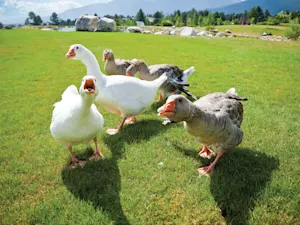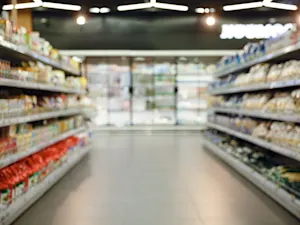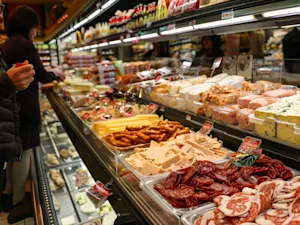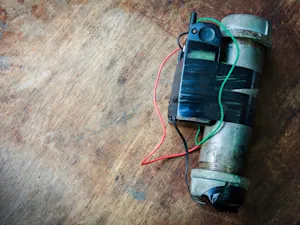
16 Must-Know Tips for Safe Food Storage
How safe is the food your family eats, really? Food safety may not be the spiciest of topics to discuss at the dinner table, but understanding basic safety protocols actually plays a major role in our lives. In fact, the Centers for Disease Control and Prevention estimates that 76 million people get sick each year from bacteria in food. Below are 16 tips that can help keep your family's food safe!
Temperature Check
-
Check your refrigerator to ensure the temperature reads below 40 F (4 C). Your freezer should be set to 0 F (-18 C). Any warmer and you're risking food contamination.
-
Need to thaw that chicken for dinner? Safety protocol says you should always thaw frozen foods in the refrigerator, rather than at room temperature.
-
When cooking, use a food thermometer to check that the internal temperature of the food is safe before storing.
-
Use the "two-hour rule," which says you shouldn't leave perishable foods at room temperature for more than two hours, or one hour if the surrounding environment's temperature is more than 90 F (32 C).
Use-By Dates
-
Consume older products first. Make this easier to remember by using the FIFO method (first in, first out).
-
Plan to use all leftovers within three to four days. Labeling and dating the containers makes this much simpler.
What to Store in the Fridge
-
Raw Meat, Poultry, and Seafood: Store on the bottom shelf of the refrigerator, sealed inside containers or packages. This prevents juices from dripping onto other foods and contaminating them.
-
Eggs: Store in the main part of the refrigerator (not in the door), inside the original egg carton.
-
Fruits and Vegetables: Wash these before storing (or consuming), and store separately from each other in the refrigerator. This helps prevent premature ripening.
-
Dairy Products: Store these items in the coldest part of the refrigerator, inside the original packaging.
-
Cooked Foods: Storing these items in shallow containers in the refrigerator (or freezer) helps them cool quickly and evenly.
-
Fresh Herbs: Store in the refrigerator, with stems in water. Cover with a plastic bag.
What to Store Elsewhere
-
Potatoes, Onions, and Garlic: Store in a dry, dark, cool place. Do not store in the refrigerator.
-
Flour, Sugar, Pasta, Rice, and Cereal: Store in airtight containers in the pantry. This prevents insect infestations and maintains freshness.
-
Canned Goods: Store cans in the pantry or any cool, dry place. If you notice signs of swelling or damage, toss them out.
-
Bread and Baked Goods: Store in airtight containers at room temperature. If you want to store longer, freeze.
If you follow these 16 rules for safe food storage, you can greatly reduce your risk of contamination. A little effort can truly go a long way in ensuring that your family's meals are delicious, nutritious, and safe!
References: Are You Storing Food Safely? | 25 Tips for Food Safety | 20 Food Storage Tips To Make Your Groceries Last Longer | Learn the Best Ways to Safely Receive and Store Food | 24 Tips and Tricks to Store Food for Better and Longer Shelf Life























